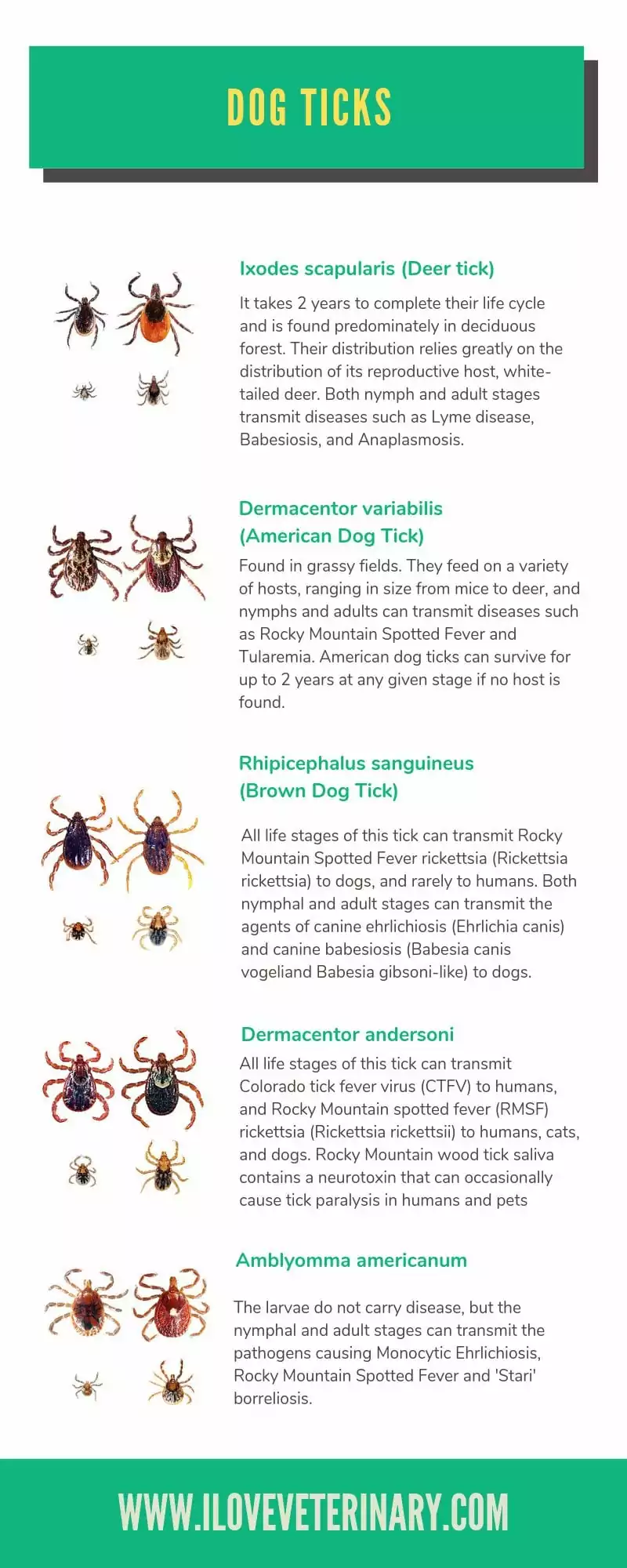How much do you know about dog ticks?
Ticks are arachnids, typically 3 to 5 mm long, part of the order Parasitiformes. Along with mites, they constitute the subclass Acari. Ticks are ectoparasites (external parasites), living by feeding on the blood of mammals, birds, and sometimes reptiles and amphibians.
Almost all ticks belong to one of two major families, the Ixodidae or hard ticks, and the Argasidae or soft ticks. Adults have ovoid or pear-shaped bodies, which become engorged with blood when they feed, and eight legs. In addition to having a hard shield on their dorsal surfaces, hard ticks have a beak-like structure at the front containing the mouthparts, whereas soft ticks have their mouthparts on the underside of the body. Both families locate a potential host by odor or from changes in the environment.
Dog ticks life cycle
Ticks have four stages to their lifecycle, namely egg, larva, nymph, and adult. Ixodid ticks have three hosts, taking at least a year to complete their lifecycle. Argasid ticks have up to seven nymphal stages (instars), each one requiring a blood meal. Because of their habit of ingesting blood, ticks are vectors of diseases that affect humans and animals.
On the infographic below, you can read some basic info about the most common dog ticks.
Tick species and the diseases they can cause
- Ixodes scapularis (Deer tick)
– It takes 2 years to complete their life cycle and is found predominately in deciduous forest. Their distribution relies greatly on the distribution of its reproductive host, white-tailed deer. Both nymph and adult stages transmit diseases such as Lyme disease, Babesiosis, and Anaplasmosis. -
Dermacentor variabilis (American Dog Tick)
– Found in grassy fields. They feed on a variety of hosts, ranging in size from mice to deer, and nymphs and adults can transmit diseases such as Rocky Mountain Spotted Fever and Tularemia. American dog ticks can survive for up to 2 years at any given stage if no host is found. -
Rhipicephalus sanguineus (Brown Dog Tick)
– All life stages of this tick can transmit Rocky Mountain Spotted Fever rickettsia (Rickettsia rickettsia) to dogs, and rarely to humans. Both nymphal and adult stages can transmit the agents of canine ehrlichiosis (Ehrlichia canis) and canine babesiosis (Babesia canis vogeliand Babesia gibsoni-like) to dogs. - Dermacentor andersoni
– All life stages of this tick can transmit Colorado tick fever virus (CTFV) to humans, and Rocky Mountain spotted fever (RMSF) rickettsia (Rickettsia rickettsii) to humans, cats, and dogs. Rocky Mountain wood tick saliva contains a neurotoxin that can occasionally cause tick paralysis in humans and pets - Amblyomma americanum
– The larvae do not carry disease, but the nymphal and adult stages can transmit the pathogens causing Monocytic Ehrlichiosis, Rocky Mountain Spotted Fever and ‘Stari’ borreliosis.
Special thanks to Tick Encounter Research Center for the tick images and info.
If you would like to read more about external parasites, read “Most common external parasites in dogs and cats” on our blog.

